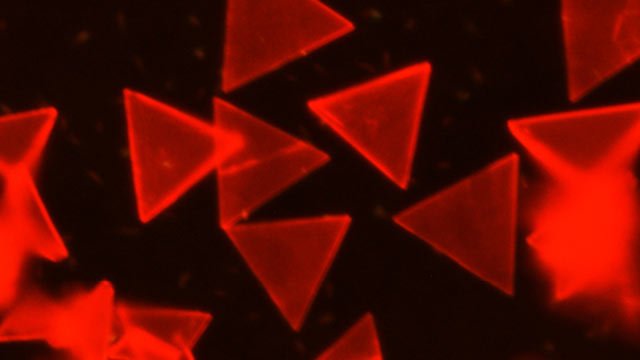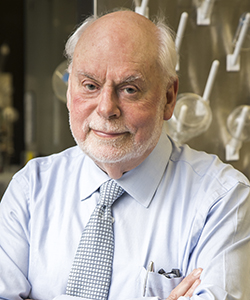Research
Scientists invent faster, cheaper strategy for designing infrared-emitting materials
September 22, 2020

New technique co-crystallizes different molecules to make two-photon excited near-infrared materials
Northwestern University researchers have developed a new low-cost, relatively simple strategy for designing materials used in live cell imaging, photodynamic therapy for cancer and night-vision technologies.
For these applications, scientists use specialized materials that absorb and emit near-infrared light. Compared to visible light, near-infrared light can penetrate materials deeper with lesser scattering and cause lower levels of photodamage.
To develop these materials, researchers currently use a chemical synthesis process that modifies the molecular structure. The Northwestern approach only needs to co-crystallize two different molecules — a convenient and efficient method based on supramolecular chemistry.
 “Our work simplifies the production process and lays a foundation for practical application,” said Northwestern’s Fraser Stoddart, senior author of the study (pictured). “This strategy will appeal to scientists working in a wide range of disciplines — from chemistry to crystal engineering to materials science.”
“Our work simplifies the production process and lays a foundation for practical application,” said Northwestern’s Fraser Stoddart, senior author of the study (pictured). “This strategy will appeal to scientists working in a wide range of disciplines — from chemistry to crystal engineering to materials science.”
The paper was published this week (Sept. 15) in the journal Nature Communications.
Stoddart is a Nobel Prize-winning chemist, the Board of Trustees Professor in Northwestern’s Weinberg College of Arts and Sciences and a member of the International Institute for Nanotechnology’s Steering Committee. Yu Wang, a postdoctoral fellow in Stoddart’s laboratory, is the paper’s first author.
Northwestern’s method works by taking advantage of the charge transfers between two molecules, in which one molecule (a donor) donates electrons to another molecule (an acceptor). The two molecules can form two co-crystals with different donor-acceptor ratios.
“The two co-crystals assume distinct solid-state superstructures, crystal morphologies and optical properties, wherein one of them constitutes a unique material that exhibits two-photon absorption and near-infrared emission simultaneously,” Wang said. “This work provides an ideal platform to uncover a superstructure-property relationship and gain a deeper understanding on the supramolecular material design.”
The study, “Two-photon excited deep-red and near-infrared emissive organic co-crystals,” was supported by the National Science Foundation and the Department of Energy.